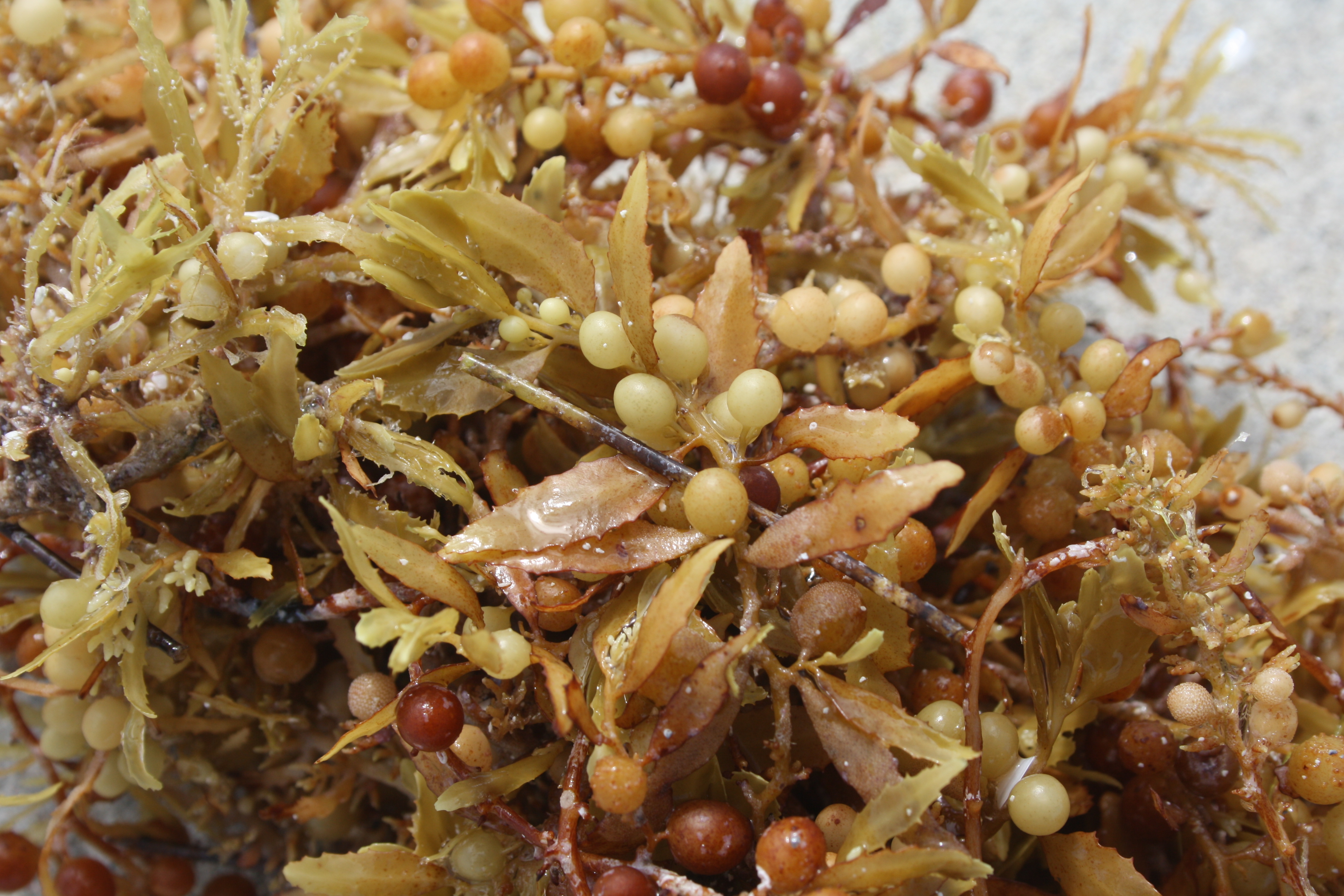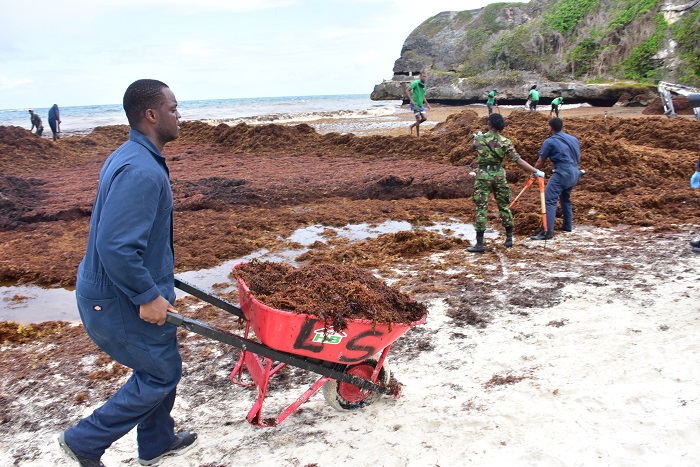It’s back — the disruptive and hated-by-brides sargassum seaweed has hit Caribbean and Atlantic beaches for summer 2022. Sargassum is brown strands of algae that originate in the Atlantic’s Sargasso Sea and eventually wash up to shore.
I first encountered it in 2015 on a trip to Mexico’s east coast. At that time, our media group embedded with the resort troops fighting the onslaught of sargassum seaweed. Try sweeping a beach. Shovel mounds of seaweed; you’ll quickly learn it’s tough work.

Unusually dense sargassum came back with force in the summer of 2018. It created a 1,000-square-mile patch of floating seaweed that moved towards the Caribbean. Each year since, even through the pandemic, sargassum seaweed has returned to Caribbean coastlines and parts of the Atlantic during summer. With it come flies, decaying plankton, foul odors and impossible to wade through seaweed lapping the shores.
Globs of Seaweed Beached for 2022
The trade publication Travel Weekly reports that this summer, sargassum seaweed is back. Outbreaks occur on some coastlines of islands including Barbados, Cayman Islands, Dominican Republic, Puerto Rico, Sint Maarten/St. Martin, Jamaica and the Mexican Caribbean. Of course, there’s potential for it to spread to more of the Caribbean, Yucatan peninsula and the mid-Atlantic as August heat waves continue to rock many regions.
The unusual volume of sargassum has been an economic nightmare for many destinations. When it gets bad, resorts must close and shift business to one of their other properties if possible.
Here’s a look at what we experienced in Riviera Maya in 2015, and what is recurring now as it moves around the Atlantic, Caribbean and Gulf Coasts through at least September, and probably through the end of the year.
What is Sargassum and why is it bad?
Sargassum is not new,. For centuries, it was primarily in the 2,000,000-square-mile region of the North Atlantic known as the Sargasso Sea. Clumps of the rich and nourishing brown seawood would break off and drift across other areas of the ocean, but rarely in such volume.
Left to dry on coastlines, in the hot sun, it becomes a tourism nightmare. Despite the eyesore and odor given off by the thousands of tiny plants and marinelife that travel with sargassum, it is not harmful in any way.
Instead, scientists stress this eco-system’s importance to healthy oceans. Some speculate that climate change causing shifting water currents and warmer seas have helped it bloom. Many blame carbon dioxide from fertilizer runoff for the abundance of sargassum.
How to find out about Sargassum

Expect to see some sargassum seaweed along any southern beach. When we visited Fort Lauderdale, for example, we found sargassum seaweed. Yet, it was at more manageable levels than in some destinations.
The sargassum outbreak is reported in real time by Sargassum Monitoring. As of August 2022, it is impacting parts of the region from the Louisiana coastline to the shores of Venezuela.
It’s important to know where you’ll find sargassum. Check the Sargassum Monitoring map and contact resorts directly to inquire about the current status of this naturally occuring — an unpreventable — event. Keep in mind that sargassum seaweed is unpredictable.
Stand and admire your pristine resort beach. Elsewhere on the island, the port may be so clogged that ferry systems are unusable. Visit fishing villages overrun with mounds of drying seawood up to 10 feet high. If tons more clogs the harbor, the sargassum prevents fishing vessels from moving out to sea.
A Family Resource: Make lemonade from holiday lemons!
Make lemonade out of a sargassum seaweed-infested lemon of a vacation. Remind your family that it is not all bad news. Sargassum bloom is an economic boon for some places. Manual labor is used to remove the seaweed in beach areas where sea turtles have made their nests. That’s why hundreds have found daily work shoveling the seaweed away from gold sand beaches so that brides can have barefoot weddings. The locals at your destination may be benefiting from this sustainable form of tourism.
Cleanup efforts are very costly. In parts of Florida, for example, beaches are closed instead of cleaned during turtle nesting season so breeding turtles are safe. That aspect of having sargassum seaweed on shore improves the mortality rate of the baby turtles
Conservationists say that large scale efforts to bury the seaweed in trenches dug into the sand will pay off in the future, when the sargassum attracts more sand to replenish and widen the beachfront along the most heavily developed coastlines.
If your resort is suddenly awash in sargassum, use the inconvenience as a learning opportunity for the whole family to understand firsthand why we must live in harmony with nature. The Caribbean Alliance for Sustainable Tourism’s handbook “Sargassum, A Resource Guide for the Caribbean” will fascinate school-age kids and is good resource for crafts projects incorporating the dried seaweed.
All we know for sure is that trying it fight it on such a large scale is a losing proposition.
Dear Reader: This page may contain affiliate links which may earn a commission if you click through and make a purchase. Our independent journalism is not influenced by any advertiser or commercial initiative unless it is clearly marked as sponsored content. As travel products change, please be sure to reconfirm all details and stay up to date with current events to ensure a safe and successful trip.
Hello, I enjiy eading alll of your artkcle post. I waanted tto write
a little comment too support you.
Can you tell us more about this? I’d care to find out more
details.